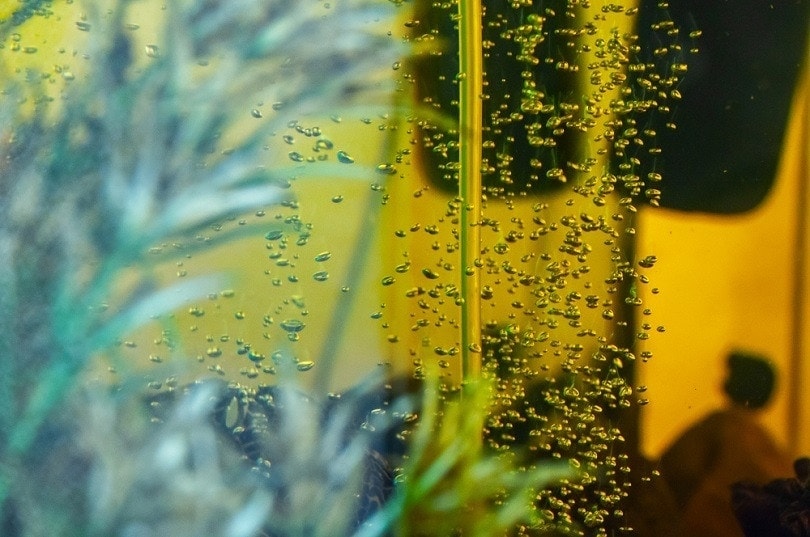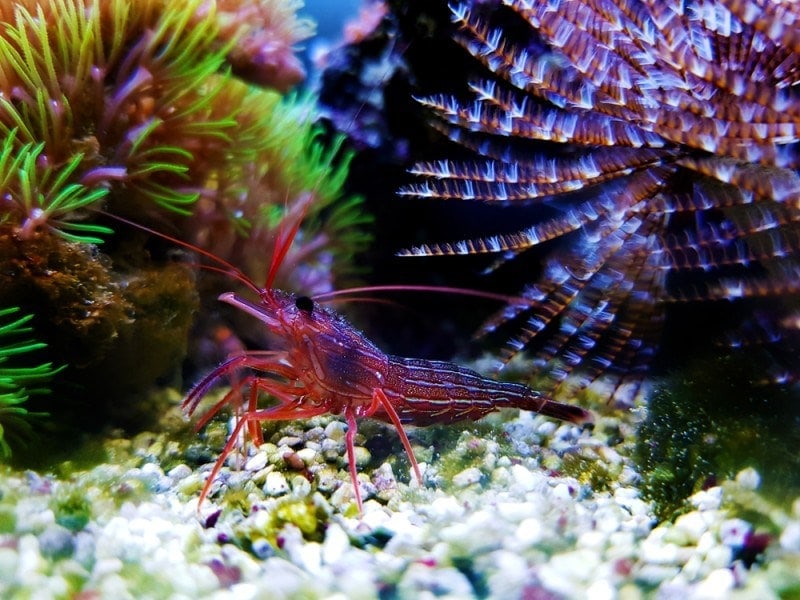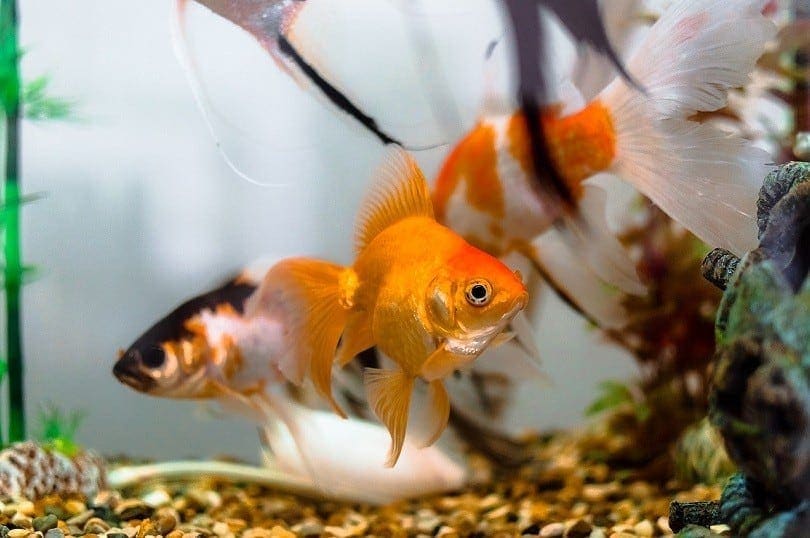What Do Ghost Shrimp Eat in the Wild and as Pets? Vet-Approved Nutrition Facts & FAQ

Updated on
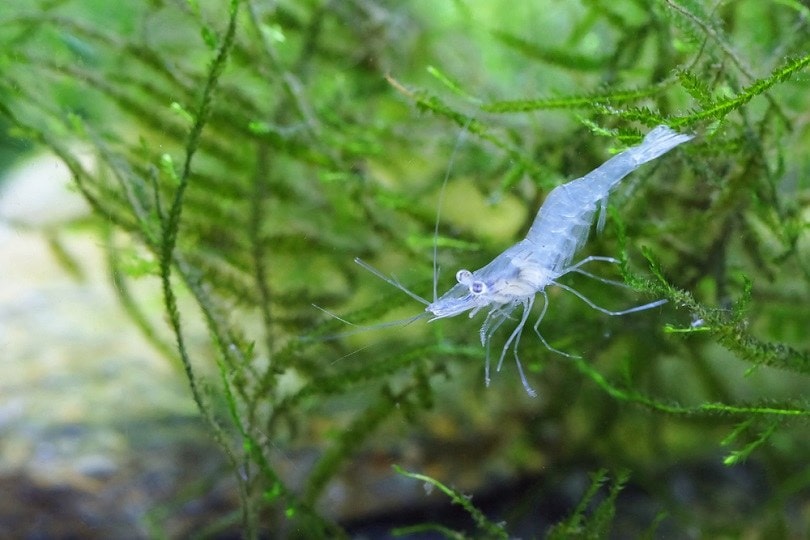
Ghost shrimp, also known as glass shrimp, are great additions to a home aquarium. They are generally easy to care for, make great tank mates for various fish, and are fascinating to watch. They are also expert tank cleaners that will eat any leftover food at the bottom of your aquarium, making them beneficial to your aquarium’s ecosystem too.
If you want to add ghost shrimp to your community tank, you may be wondering what to feed them. Learning what they eat in the wild can help you with captive feeding. They are mainly herbivorous, and since they are scavengers, they will feed on anything and everything!
Luckily, you’ve come to the right place! Let’s look at what ghost shrimp eat in the wild, and what you should feed them as pets.
Ghost Shrimp Facts
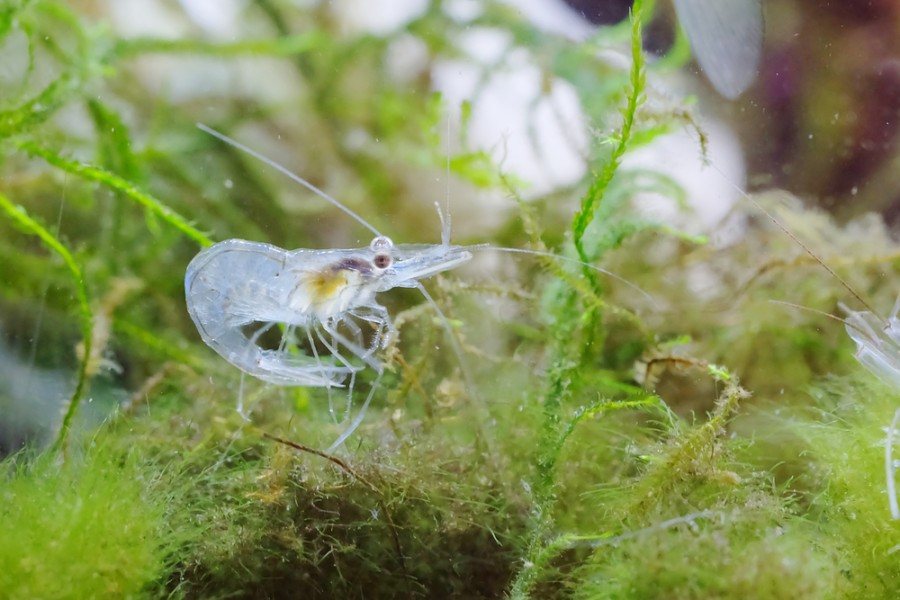
Ghost shrimp are unique-looking creatures with distinctive transparent bodies, except for a yellow spot at the center of their tail. They are native to the Southeastern United States, and have been popular additions to home aquariums for many years. They have 10 legs, four of which have tiny claws on the end that they use for feeding. These tiny shrimps only live for around a year, and make great tank mates for peaceful, small fish.
| Scientific name | Palaemonetes paludosus |
| Lifespan | Up to one year |
| Diet | Omnivore |
| Average adult size | 1–1.5 inches |
| Minimum tank size | 5 gallons |
What Do Ghost Shrimp Eat in the Wild?
Ghost shrimp can be found throughout North America in small, slow-moving streams, rivers, and lakes, typically sticking to the bottom layer of water. They can be found on the substrate of whatever water that they’re in, where there is plenty of food for them to scavenge. They prefer areas with many rocks and plants for them to hide away from predators. They simply eat what drops down to them from the upper layers of water, which could be almost anything. In the wild, they are nocturnal.
Their diet in the wild is largely herbivorous, although since they are scavengers, they will feed on anything and everything. The substrate at the bottom of bodies of water is naturally filled with plant detritus—their main source of food—but they can also be seen nibbling on live plants and algae. They’ll eat almost anything that comes their way, including small insects, larvae, and eggs, so they are omnivorous by nature.

What Do Ghost Shrimp Eat as Pets?
As with any aquarium pet, your ghost shrimp will benefit from a diet that matches their wild diet as closely as possible. The first step in this process is giving them the perfect tank environment, so they are happy and healthy. Their substrate is arguably the most important factor, because this is where they will spend most of their time. Any fine substrate that won’t damage their delicate antennae is ideal.
Since their diet in the wild is so diverse, this is what you’ll want to feed your ghost shrimp in captivity. Their main diet will consist of the detritus from live plants in your aquarium, leftover fish food, and any algae. This will not be enough on its own, though—so you’ll need to add food specifically made for them too. Luckily, this is not complicated because they are not picky eaters. You can feed them any of the following:
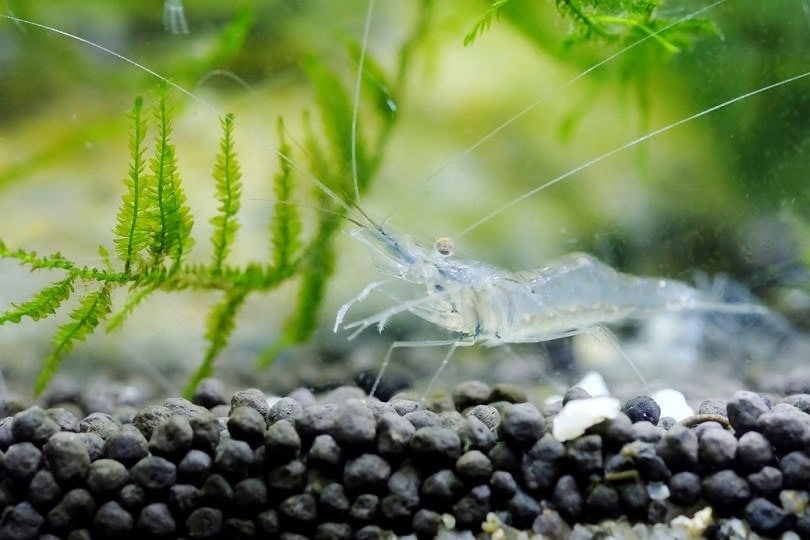
- Shrimp pellets
- Fish flakes
- Fish pellets
- Algae wafers
- Daphnia
- Green vegetables
- Insects
- Bloodworm
- Mosquito larvae
Just like your other aquarium pets, you need to be careful to not overfeed your shrimp, and to only give them enough food to consume within a few minutes. Since they are feeding mostly on algae, detritus, and leftovers, they do not need too much additional feeding. Calcium supplements are ideal to help strengthen their shells. A great idea is to actually withhold food from your shrimp 1 or 2 days or so a week, to encourage foraging.
Conclusion
Ghost shrimp will eat anything that they can get their claws on, from plant detritus to algae and leftover fish food—so they are a breeze to care for. It’s a good idea to supplement their foraging diet with food of their own, but be careful of overfeeding. A good rule of thumb is to feed them every other day if you have a heavily planted and populated aquarium, and skip a day once a week if not. The key to feeding pet ghost shrimp is variety, and as long as they have plenty of different sources of food, they’ll be thriving!
- You might also be interested in: Ghost Shrimp And Betta: Can You House Them Together?
Featured Image Credit: Nicholas Toh, Shutterstock


